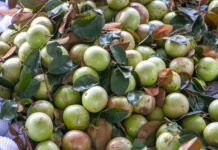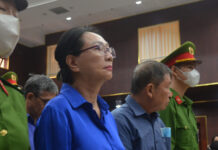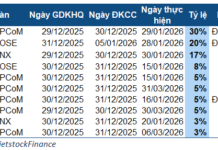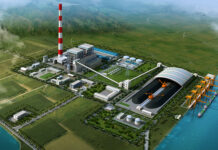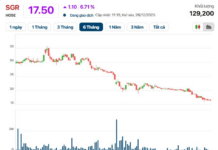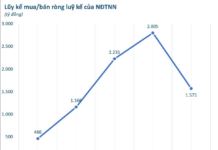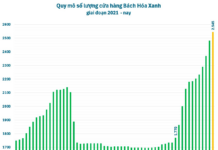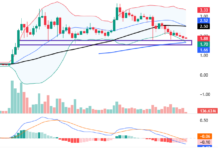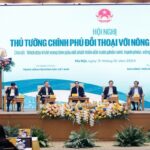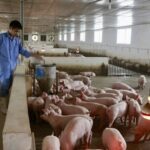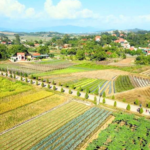The Ministry of Agriculture and Environment has submitted Proposal No. 119/TTr-BNNMT-CNTY to the Prime Minister, suggesting a pilot program for multi-story pig farming in Vietnam. This innovative approach aims to revolutionize the country’s agricultural production methods, embracing modernization while ensuring biosecurity, land resource conservation, and improved economic efficiency.
INITIATED BY TWO DOMESTIC ENTERPRISES
According to the Ministry, pig farming is a dominant sector in Vietnam’s agriculture, contributing 62-65% of the country’s total meat production. By 2024, the industry is projected to produce nearly 5.2 million tons of meat, ranking Vietnam 6th globally in production and 4th in pork consumption. With an average consumption of 37.04 kg/person/year, up from 30 kg in 2021, the sector plays a vital role in ensuring food security and driving economic growth.
However, the current farming model in Vietnam is predominantly small-scale and dispersed, lacking standardized biosecurity measures and advanced technology integration. This makes the industry vulnerable to significant disease outbreaks. Between 2019 and 2020, the African Swine Fever epidemic led to the culling of over 9 million pigs, causing estimated losses of more than VND 30,000 billion. This, coupled with localized supply shortages, caused a surge in pork prices, reaching VND 105,000/kg in April 2020, directly impacting the consumer price index, people’s livelihoods, and macroeconomic stability.
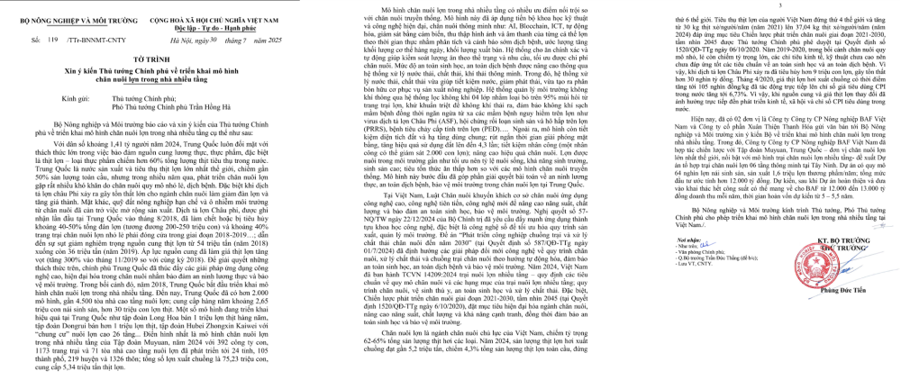
“Driven by the need to transform farming models and adopt advanced technology, the Ministry of Agriculture and Environment has received proposals from two domestic enterprises: BAF Vietnam Agricultural Joint Stock Company and Xuan Thien Thanh Hoa Joint Stock Company, to implement multi-story pig farming in Vietnam.”
Excerpt from Proposal No. 119/TTr-BNNMT-CNTY by the Ministry of Agriculture and Environment
Notably, BAF Vietnam Agricultural Joint Stock Company has entered into a strategic partnership with Muyuan Group (China), the world’s largest pig farming company, renowned for its multi-story farming model. BAF Vietnam proposes to invest in a smart six-story pig farming complex in Tay Ninh, with a capacity of 64,000 breeding sows and an annual production of approximately 1.6 million commercial pigs. The project, with a total investment of over VND 12,000 billion, is expected to generate revenues of VND 12,000-13,000 billion/year once it reaches full capacity, with a projected payback period of 5-5.5 years.
LEARNING FROM CHINA’S EXPERIENCE
As per the Ministry, China, contributing nearly 50% of global pork production and consuming over 60% of its pork domestically, adopted the multi-story pig farming model in 2018. To date, they have constructed over 2,000 such models, comprising nearly 4,500 high-rise buildings dedicated to pig farming. These farms annually supply approximately 2.65 million breeding sows and over 30 million commercial pigs, significantly contributing to stable supply, reduced disease risks, and improved farming efficiency, despite limited land resources.
Based on China’s experience, the Ministry believes that the multi-story pig farming model offers significant advantages and is well-suited to Vietnam’s current agricultural context and conditions.
“In the multi-story pig farming model, the system can collect real-time images and sounds of each pig, enabling early disease detection and daily body weight estimation. Automated feeding technology optimizes feeding quantities based on individual conditions, minimizing farming costs.”
Mr. Phung Duc Tien, Deputy Minister of Agriculture and Environment
The model incorporates modern technologies such as Artificial Intelligence (AI), Blockchain, Information and Communication Technology (ICT), automation, and intelligent monitoring sensors. Additionally, it includes intelligent wastewater, waste, and emission treatment systems, conserving water, reducing emissions, and recycling waste into organic fertilizer for agriculture. A four-layer air filtration system eliminates over 95% of odors and disinfects the air before release, preventing dangerous diseases like African Swine Fever (ASF), Porcine Reproductive and Respiratory Syndrome (PRRS), and Porcine Epidemic Diarrhea (PED).
In terms of resource utilization, this model saves land and infrastructure by increasing land efficiency up to 4.3 times compared to traditional methods. It also expedites land clearance, reduces labor requirements, and enables one worker to oversee up to 2,000 pigs. These advantages highlight the model’s significant potential for replication in Vietnam, especially amid rapid urbanization, shrinking agricultural land, and stringent biosecurity requirements.
POLICY AND LEGAL FOUNDATION
The Ministry of Agriculture and Environment notes that Vietnam has promulgated policies encouraging the modernization of the livestock industry, emphasizing the adoption of advanced technology, biosecurity, and environmental protection. Notably, the national standard TCVN 14209:2024 has been issued to provide technical guidelines for multi-story pig farms, indicating legal readiness for this innovative model.
Based on these analyses, the Ministry proposes that the Prime Minister consider permitting a pilot program for multi-story pig farming in Vietnam. This initiative is not only technically innovative but also strategically significant for restructuring the livestock industry, enhancing competitiveness, and fostering sustainable development.
The success of this pilot will set a precedent for nationwide replication, contributing to the goals of the Strategy for Livestock Development towards 2030, with a vision to 2045 – promoting sustainable, efficient, food security-oriented, environmentally friendly, and internationally integrated livestock development.
Revolutionizing the Agri-Food Industry: Targeting a $100 Billion Export Revenue for Vietnam’s Agricultural, Forestry, and Aquatic Products
Prime Minister Pham Minh Chinh has set an ambitious goal for Vietnam’s agricultural sector: to achieve $100 billion in exports of agricultural, forestry, and aquatic products in the coming years. To realize this vision, he has identified nine key areas that need attention and reform. These include institutional and policy frameworks, planning and infrastructure, access to capital and insurance, market development, scientific and technological advancements, skilled workforce training, rural cultural development, and, most importantly, understanding and addressing the needs and aspirations of Vietnam’s farmers.
The Green Revolution: 9 Key Issues for Developing an Eco-Friendly Agriculture, a Modern Rural Economy, and a Cultured Farmer
“On December 31st, Prime Minister Pham Minh Chinh chaired a conference with farmers, themed ‘Igniting the Aspiration for Prosperity to Build a Prosperous and Happy Nation; Confidently Stepping into the New Era.’ The Prime Minister emphasized the need to review and refine policies to accelerate and boost the goal of developing ecological agriculture, modern rural areas, and cultured farmers.”
Unveiling a Coastal Paradise: Transforming a 1,000-Year-Old Historic Land into a “Golden Treasure”.
This land was once a desolate marshland, a wild and untamed place. Today, it has been transformed into a lush and bountiful landscape, a testament to the power of nature and the potential that lies within.


